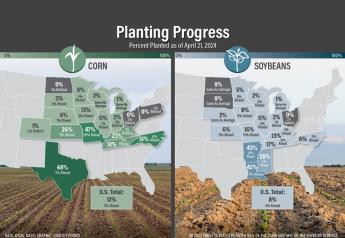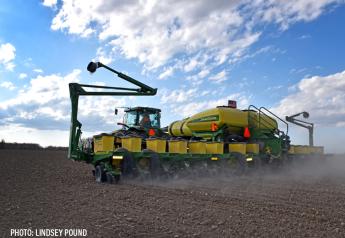U.S. Agriculture Markets Jump as Frigid Weather Blankets Farm Belt

Bone-chilling cold across the U.S. farm belt riled agriculture markets at midweek as concerns over crop damage and delayed export shipments sent prices of key food commodities soaring.
Exporters along the Gulf Coast, the country’s largest outlet for grains, scrambled for barge loads of corn and soybeans as two weeks of sub-freezing Midwest weather froze the Illinois River, a major grain barge shipping waterway.
In the Plains, hard red winter wheat prices hit the highest in six weeks on worries that crops sustained freeze damage, while cattle prices hit seven-week peaks on concerns over slowed beef cattle production at feedlots.
And although the harshest cold in the farm belt has likely passed, forecasters expect temperatures in the central United States to remain well below normal through at least the end of the week.
“The worst may be over, but the damage is done,” said Drew Lerner, chief agricultural meteorologist with World Weather Inc.
“Ice accumulations will continue aggressively in the upper parts of the Mississippi and Illinois River basin over the next four days,” he said.
Prices for grain barges rallied for a second day on Wednesday as Gulf Coast exporters were forced to turn to shipments loaded along the Ohio River, which was not iced over.
“Exporters are trying to get some insurance bushels in their hands. There’s not going to be anything coming off the Illinois River for a couple of weeks,” said a grain barge trader who asked not to be named because he is not authorized to speak to media.
Soybean barges loaded in January and delivered to the Gulf traded as high as 50 cents over Chicago Board of Trade March futures, the highest since late September. January corn barges traded at 47 cents above CBOT March futures, a 10-month high.
CME Group Inc, which owns the CBOT, said it is monitoring the icy conditions on the river, where its approved delivery stations are located. The exchange’s January soybean contract is currently in delivery.
“At present the majority of regular shipping stations are able to make/take deliveries,” spokesman Chris Grams said in an email.
Wheat Rally Continues
Benchmark HRW wheat prices on the Chicago Board of Trade on Wednesday climbed to the highest since Nov. 22 on worries over deteriorating crop conditions.
Temperatures in central and southwest Kansas, eastern Colorado and northern Oklahoma were low enough for long enough on Monday to damage or kill some dormant hard red winter (HRW) wheat, which is milled for flour to make bread and pizza crust.
How broad the damage was will not be clear until the crop breaks dormancy in late winter or spring.
Crop conditions in Kansas, the top HRW producer, are already deteriorating. The U.S. Department of Agriculture rated just 37 percent of the crop in good to excellent condition at the end of December, down from 51 percent a month earlier.
Colder air across the U.S. Plains lifted benchmark CME live cattle futures to a seven-week high late last week as beef packers rushed to secure livestock. Prices are expected to ramp higher this week as frigid weather may slow weight gains in cattle and make it difficult to sort and load livestock - which limits their availability to processors.
“Late last week and this week on the cattle market there has been some difficulties in transporting animals and even meat in some areas of the Plains, Upper Midwest and in the Eastern United States,” said Colorado-based Livestock Marketing Information Center Director Jim Robb.







